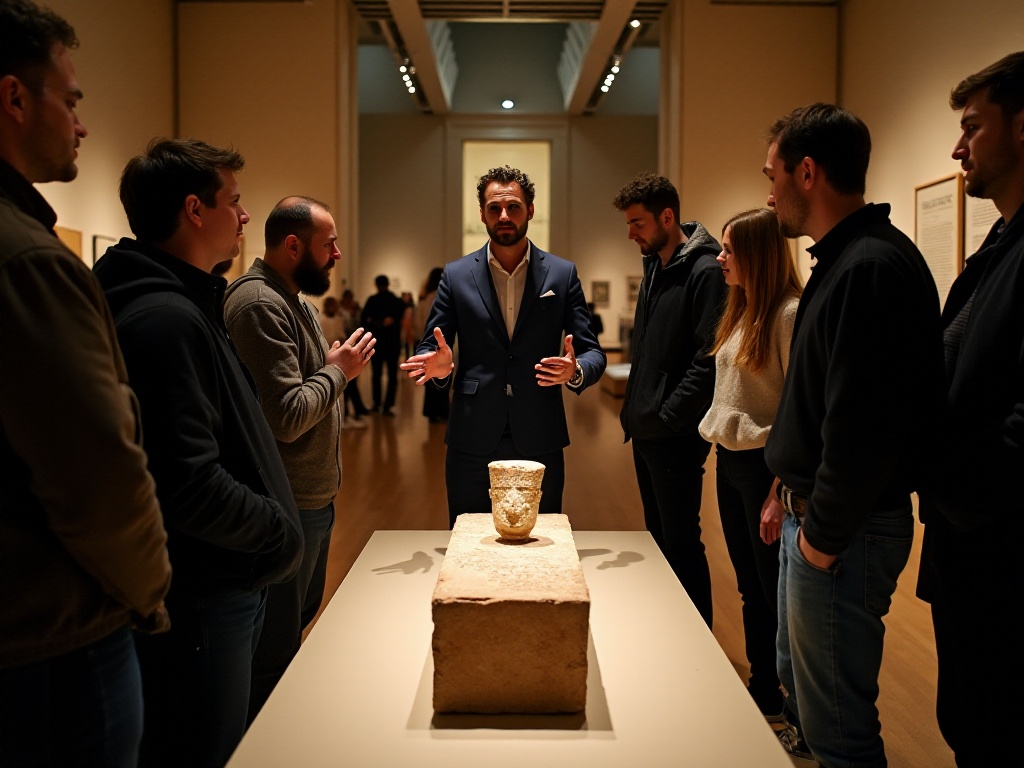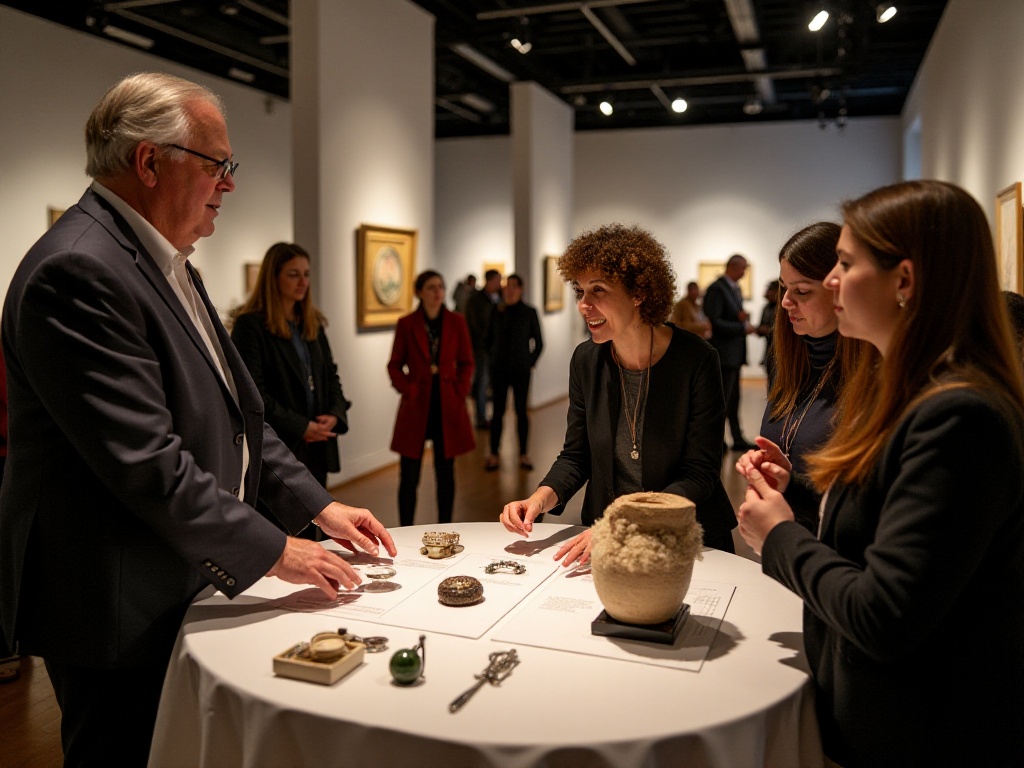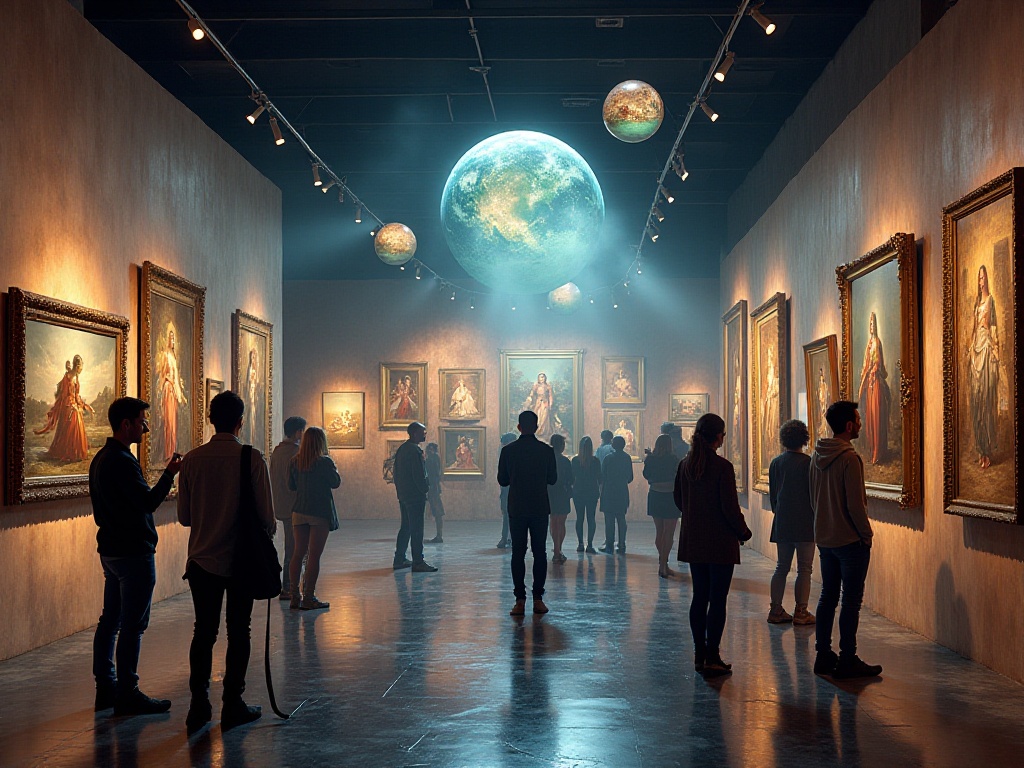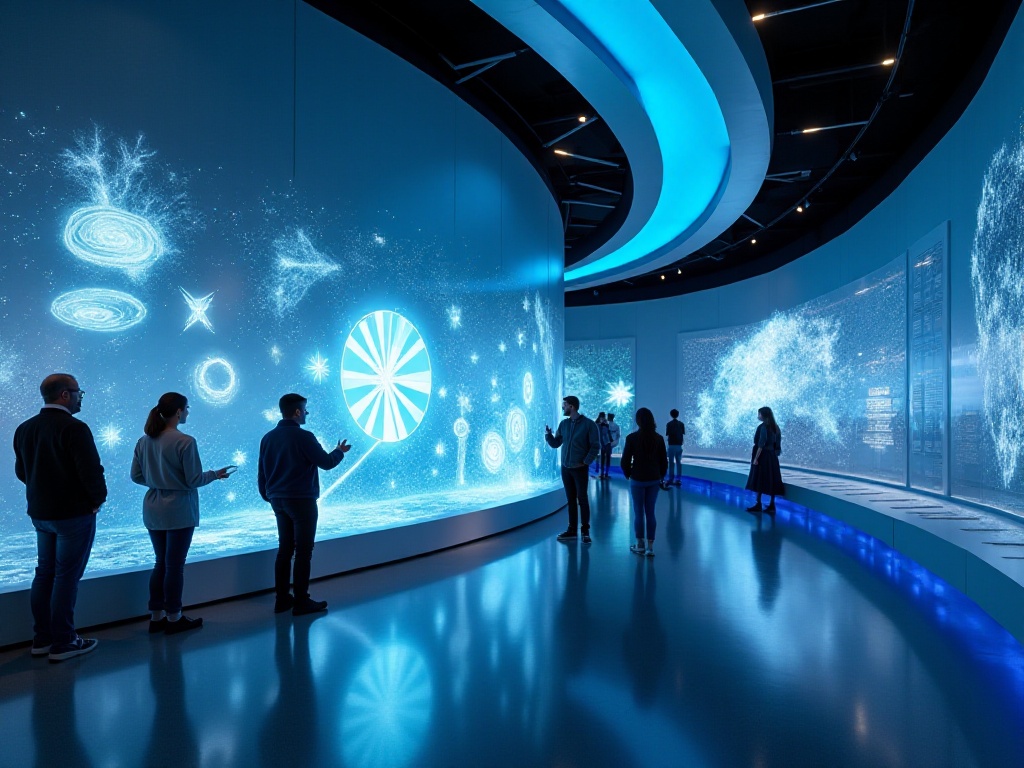Starting Out
I still remember how nervous I was the first time I worked as a guide at the British Museum. It was spring 2023, right after passing my training assessment, standing in front of the Rosetta Stone facing a group of expectant visitors. My heart was racing, worried I might make a mistake during the presentation. My palms were sweaty and my voice was slightly shaky, but seeing the visitors' attentive gazes, I took a deep breath and began telling the story behind this stone.
I recall spending two whole weeks researching materials to prepare for this tour. Not only did I study the stone's history, but I also specifically learned about the evolution of Egyptian hieroglyphics. I even practiced my presentation in front of the mirror at home, repeatedly adjusting my pace and expressions. During that time, my room walls were covered with notes, and I even dreamed about how to make complex history engaging and interesting.
Looking back, that nervousness and anxiety actually made me prepare more carefully for each tour. I began to realize that as a guide, we're not just "explaining artifacts" but engaging in a cross-temporal cultural dialogue. Every exhibit has rich stories behind it, and our job is to convey these stories to the audience in the most vivid way possible.
Gradually, I started to enjoy this feeling of dialoguing with history. I remember once, an elderly gentleman came up to me after my presentation and said, "Young lady, listening to your explanation made me feel like I traveled back thousands of years." That moment truly touched me, because that was exactly the effect I wanted to achieve.
Types of Services
When it comes to museum guide services, there's quite a variety. From basic group reservation tours to scheduled tours, and now the increasingly popular self-guided options, each format has its unique charm and challenges.
Group reservation tours are usually for adult groups of eight or more, and this format really tests a guide's adaptability. I remember once hosting a team of photography enthusiasts who were particularly interested in the Egyptian gallery. To meet their needs, I specifically designed a "Dialogue between Light and History" themed route. Not only did I show them the best photography angles, but I also shared many interesting facts about ancient Egyptian architectural lighting. Watching them excitedly adjust their camera settings to capture the beauty of the artifacts, I was infected by their enthusiasm.
During that tour, I deliberately spent extra time in the mummy gallery. The lighting design there is particularly clever, creating a mysterious and solemn atmosphere. I explained to them how ancient Egyptians utilized natural light to decorate their temples, and the religious significance behind these architectural designs. Team members listened intently, occasionally raising their cameras to capture special moments. In the end, they even took a photo of me explaining in front of an exhibit, calling it "the most beautiful moment of cultural transmission."
Scheduled tours are one of my favorite formats. The fixed tour times at 12:30 PM and 2:00 PM daily always bring interesting visitors. Sometimes it's students passionate about art, sometimes travelers specifically seeking cultural experiences, and each encounter brings unexpected fascinating conversations.
I remember during one scheduled tour, I met a grandmother and granddaughter. The little girl was about seven or eight, very lively. While explaining exhibits related to Greek mythology, she would always ask imaginative questions. Like "Why doesn't Athena wear glasses?" and "Is Zeus's lightning like today's chargers?" These innocent questions filled the entire tour with laughter, making other visitors very happy too.
Later, I gradually developed a method of "teaching according to the audience." For student groups, I would include more historical anecdotes and stories; for professionals, I would focus on the artistic value and historical significance of the artifacts; and for family groups, I would design some interactive elements that both adults and children could participate in.
Self-guided tours have become increasingly popular in recent years. Many visitors prefer to explore at their own pace, and we provide detailed audio guides and electronic maps for them. Interestingly though, visitors on self-guided tours often quietly follow along when they hear me giving explanations to other groups. This makes me feel that even the most advanced technology can't replace human-to-human communication.
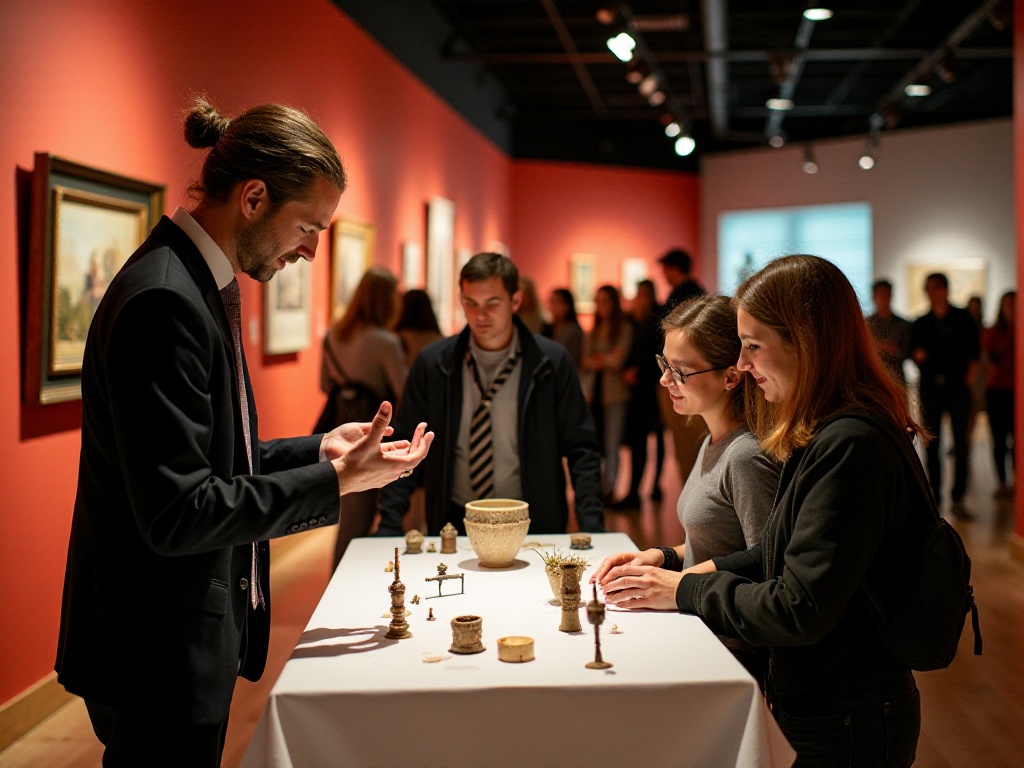
Special Programs
Speaking of museum special programs, there are truly countless ones. The most memorable for me are the interactive experience activities. Museums are no longer cold exhibition spaces but vibrant platforms for cultural exchange.
We set up "Art Carts," which is a very popular interactive program. The carts contain replicas of various artifacts, allowing visitors to physically touch "history." I remember once while pushing a cart with ancient Greek pottery replicas, I encountered a group of middle school students. They were a bit shy at first, but when I encouraged them to touch and carefully observe the patterns on the pottery, their eyes immediately lit up.
A boy pointed to the patterns on the pottery and asked me, "Why are all these figures black?" This question excited me because it was perfect for explaining the craftsmanship of ancient Greek black-figure pottery. I detailed how they controlled kiln temperature and ventilation to change the pottery's color, and how advanced this technique was at the time. Seeing the students' amazed expressions, that joy of sharing knowledge is truly indescribable.
In terms of accessibility tours, we've made many innovative attempts. I once hosted a visually impaired visitor, an experience that gave me a new understanding of "seeing the world with heart." To help her experience the beauty of Greek sculptures, I not only described every detail verbally but also prepared specially made 3D printed replicas for her to touch.
I remember when her fingers gently traced the contours of the Venus statue, her expression was particularly focused. I told her this statue represents the goddess of love and beauty, describing the elegant pose and delicate expressions. She thoughtfully said, "So this is how beauty can be perceived." At that moment, I truly felt the power of art, how it can transcend visual limitations and reach directly to the heart.
We've also developed some special themed tours. For example, "A Day at the Museum" leads visitors through the museum's pre-opening preparations and daily artifact conservation work. There's also "Dialogue of World Civilizations," which compares artistic creations from different civilizations in the same period to show the diversity and commonality of human civilization.
I remember during one "A Day at the Museum" activity, I led a group of visitors interested in artifact restoration to visit the restoration workshop. Watching the professionals carefully restore a piece of pottery, visitors held their breath. When the restorer explained the scientific principles behind each step, everyone's faces were filled with amazement. This made me realize that museums are not just places to display history but bridges connecting the past and present.
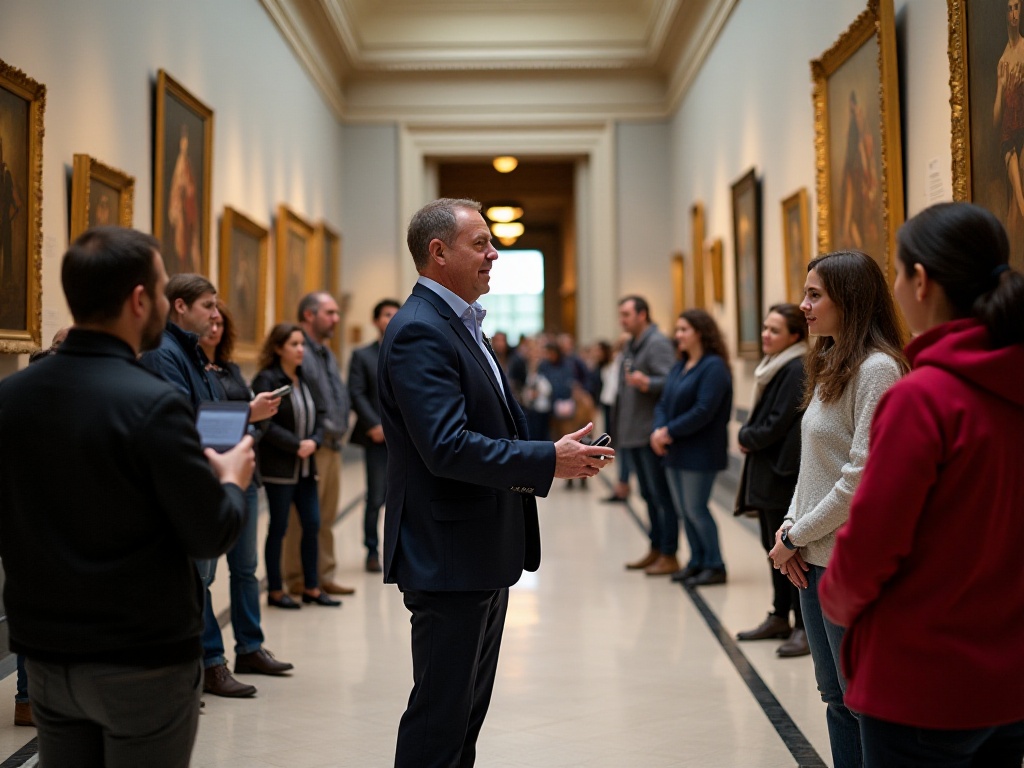
Practical Skills
Speaking of practical skills, it's truly a thick book of experience. Preliminary preparation work is absolutely crucial. I remember when I first started leading groups, I would arrive at the museum an hour early to walk through the route again and check if any exhibits had been moved. I maintain this habit even now because museums are "living" places, and exhibition layouts often have minor adjustments.
Once, this habit really helped a lot. That morning, during my routine pre-tour check, I discovered an important exhibit had been temporarily sent for restoration. Thanks to finding out early, I immediately adjusted the tour route and prepared high-resolution images of the exhibit as a substitute. Without that advance check, it could have been quite embarrassing in front of the group.
Regarding content research, my notebook is practically a small encyclopedia. Every artifact has countless interesting stories and knowledge points behind it. For example, when explaining Egyptian mummies, I mention that the spices ancient Egyptians used to make mummies were more precious than gold at the time. These vivid details always spark visitors' interest.
I've also specifically learned some storytelling techniques. For instance, when explaining the Parthenon sculptures, I first paint a picture of daily life in ancient Greece, making visitors feel as if they're transported to that era. At key points, I deliberately slow down my pace, using voice modulation to create atmosphere. These little techniques make the explanations more engaging.
Interacting with visitors is also an art. I've found that occasionally throwing out small questions helps maintain visitors' attention. For example, when explaining the Roman gallery, I might ask, "What do you think ancient Roman bathhouses were like?" Such questions can spark visitors' imagination and make the tour more interesting.
The ability to handle unexpected situations is also particularly important. Once during a tour, we suddenly encountered temporary maintenance in a gallery. I immediately adjusted the visiting route and improvised some information about the museum's architectural history, turning this "accident" into a special gain.
I remember there was a particularly mischievous little boy who kept interrupting my explanations. Instead of stopping him, I incorporated his questions into my explanation and asked him to be my "little assistant." This approach not only calmed him down but made the whole group's atmosphere more lively.
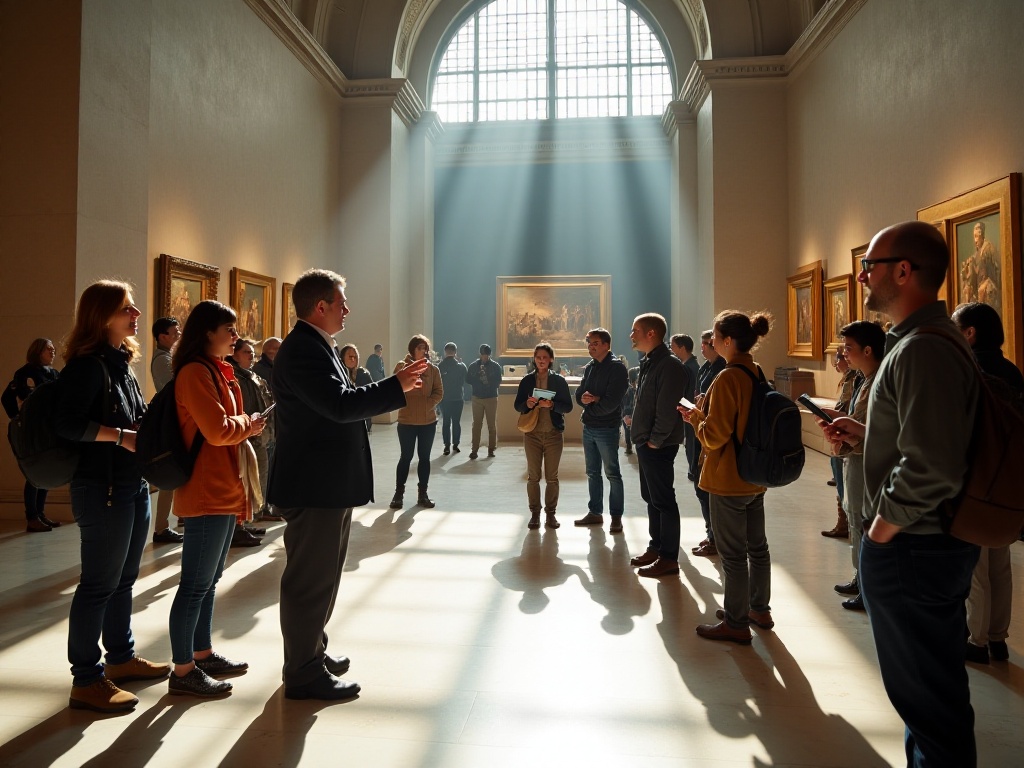
Future Outlook
With the rapid development of technology, museum tours are experiencing unprecedented changes. Many visitors now prefer self-guided tours using mobile apps, allowing them to explore at their own pace and interest. However, I firmly believe that the warmth and interactivity that human guides bring cannot be completely replaced.
Museum tours have evolved from one-way knowledge transmission to immersive cultural experiences. The "Behind the Scenes" program is a great example, letting visitors personally experience the process of artifact restoration and conservation. Watching visitors carefully put on gloves and try to clean artifact surfaces under restorers' guidance, their focused and reverent expressions are truly impressive.
In terms of digitalization, we're experimenting with AR technology to bring ancient artifacts "to life." Standing in front of the Parthenon sculptures, through AR glasses, you can see their original painted effects and view virtual reconstructions of the complete temple. This technology isn't meant to replace traditional tours but provides new possibilities for interpreting artifacts.
We're also developing a "Virtual Artifact Dialogue" project. Through holographic projection technology, visitors can "face-to-face communicate" with historical figures. Imagine being able to seek philosophical advice from Socrates or hear Caesar tell stories about ancient Roman wars - isn't that amazing?
But technology is ultimately just a tool; the key is still conveying cultural warmth. I remember an old professor saying, "Every artifact in the museum is a witness to an era, and our job is to let them tell their own stories." This statement deeply resonated with me.
As a museum guide, I deeply feel that I'm not just an interpreter but a bridge connecting past and present. Whenever I see the light of curiosity in visitors' eyes, see their thoughts and emotions from understanding history, I feel this job is particularly meaningful.
Future museum tours will certainly see more innovations and breakthroughs, but what won't change is our love and responsibility for cultural heritage. I look forward to more people experiencing the charm of history through our explanations and developing thoughts about human civilization.
What are your thoughts about museum tours? Welcome to share your views and experiences in the comments. Let's discuss together how to bring new vitality to museums, these treasuries of civilization.




